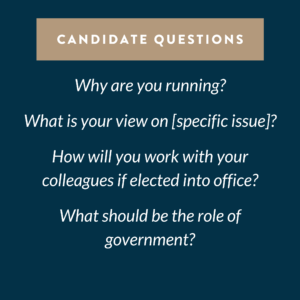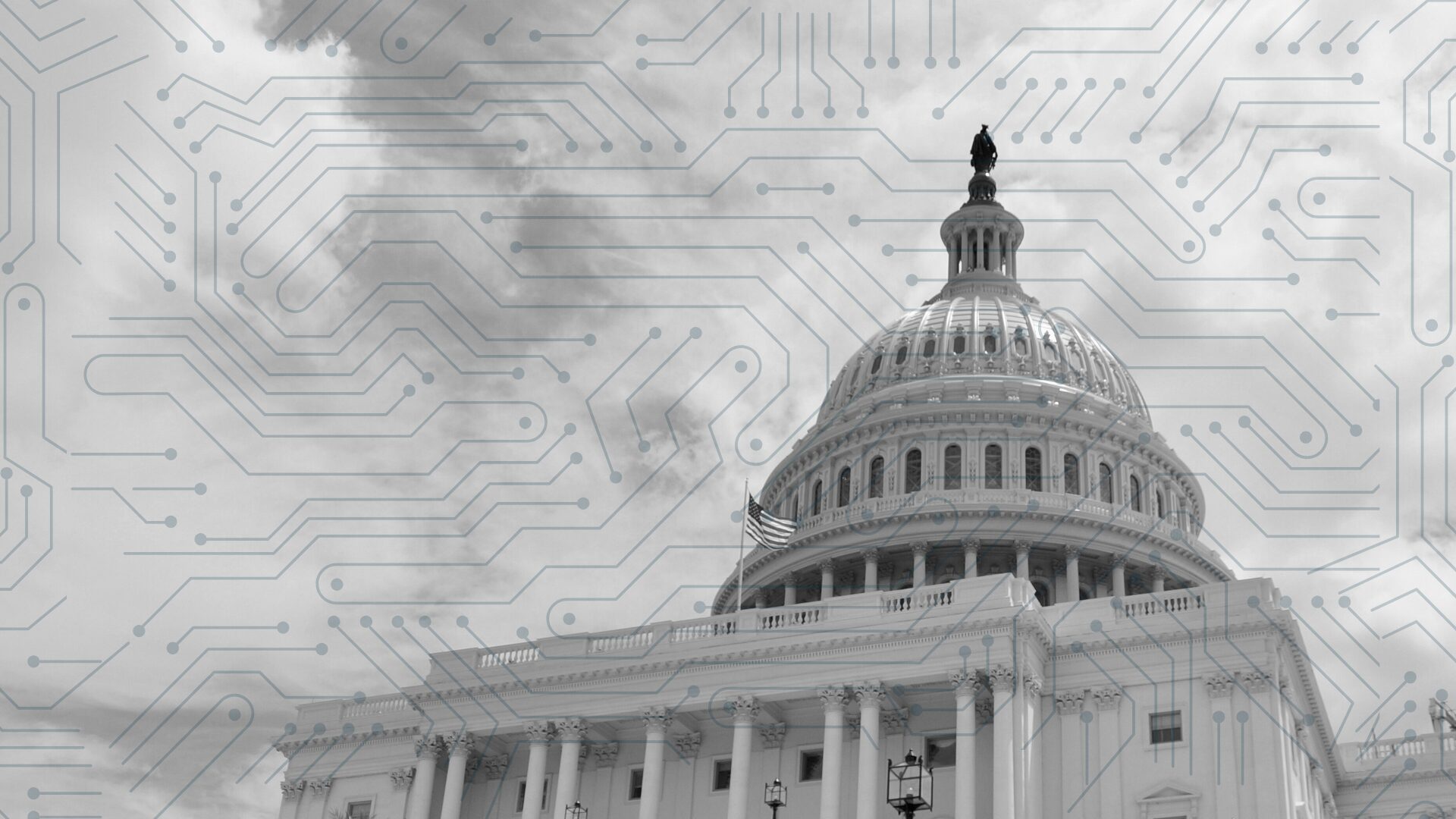
POLICY INSIGHT
The Active Voter Guide
Engage in the Process
Listen to The Trust Your Voice Podcast for an audio version of this guide.
VOTE
Make a plan to vote! Talk to your community and gather a group to go to your polling place on Election Day. Find out where to vote by looking up your polling location. Ask your employer if they provide time off to vote. In Texas, for instance, state law mandates that employees get time off to vote. See if your state does the same here.
If you’re not registered, there are many resources to help you. See The Policy Circle’s First-Time Voter Handbook for information about registering and checking your state’s voting requirements.
RESEARCHING YOUR BALLOT AND CANDIDATES
As an active voter, you may be asking what races are taking place that could impact the future of your city or state. Check out Ballotpedia’s Elections Calendar for detailed information on statewide and local elections. This resource will also help you find out what and who is on your ballot.
BALLOT MEASURES
It’s likely that you will also have the opportunity to vote on ballot measures. An excellent first step is to categorize the type of measure on your ballot. While all 50 states allow for ballot measures of some kind, not all allow for every type of measure.
Ballotpedia’s election calendar is a great place to start researching the content of the measures in your election. Groups lead some measures – if you notice this, follow up with the organization to understand their reasoning and rationale for the measure. If the measure is connected to a specific issue, search The Policy Circle’s Brief Library to see if one of the 60+ briefs covers the issue.
CANDIDATES
Once you know who is on your ballot and the positions they seek, you can do your due diligence to ensure your vote is as informed as possible. Identify which political party the candidate is connected with and investigate their platform. A good place to start is with the national platforms you can find on the RNC and DNC websites. You can research a candidate’s voting records (whether they are in federal or state government), previous government service, and endorsements. Do a quick news search to find articles about the candidates from various outlets. 
Email the candidate if you understand your candidate’s background but still have questions. You may want to ask them questions to understand better who they are and where they stand on major issues.
Nearly every issue has a national organization that follows it and produces a ‘ballot guide’ on their topic(s) of interest. Depending on what topics you’re interested in – taxes, education, healthcare policy, etc – you can search for ballot guides from reputable organizations focused on those issues, such as BallotReady.
DONATE
Donating to a political campaign is an additional way to exercise your First Amendment right to free speech and actively support a political candidate. Any and every donation to a political campaign is impactful. You can contribute to elections by donating to a candidate’s committee, a party committee, a Political Action Committee (PAC), or to more general ‘party-building’ activities.
Donations are an effective way to voice your support for or opposition to the elected officials in the government. Supporting candidates by giving your time or money is a great way to contribute to our free and fair election system. Keep in mind that there are federal regulations on campaign donations and state regulations vary. Some laws require disclosures for gifts over a certain amount. Read The Policy Circle’s Campaign Finance Deep Dive for more information on campaign and election finances.
To donate to a PAC or super PAC, identify a group that aligns with your values and visit their website to donate. The same goes for candidates that you are considering.
Remember that donations are just one form of participation beyond voting. There are several other ways to make an impact, such as by giving your time and leveraging your networks.
VOLUNTEER FOR A CAMPAIGN
Most campaigns welcome volunteer support and rely on them to be as effective as possible. If you find a candidate you are passionate about supporting, contact them to learn about their needs and ways you can help. Showing your support can be as simple as displaying a yard sign. Other examples include hosting a meet and greet for your friends and neighbors, door-to-door canvassing, making calls encouraging people to vote, and being a candidate campaign representative at the polls. Most candidates will have volunteer or contact information on their websites. If not, consider checking with the political party or connecting with the local chapter. Finally, connect with your local election office to get involved in the election process if you do not feel compelled to promote one specific candidate.
BE A POLL WORKER
Besides voting, one of the most direct ways you can participate in elections is by serving as a poll worker, also called an election official or election judge. At a polling location, you can help verify that election rules are followed, ensure the integrity of the results, and certify that all eligible voters have the opportunity to do so.
By volunteering your time and resources to make elections free and fair, you are serving your community, state, and country. It’s a great way to engage in your community, interact with voters and the voting process, and significantly impact the outcome of an election by reducing fraud.
You can also bring a friend to make the day more enjoyable. Many polling locations house multiple precincts; two friends can easily make a significant impact. Your firsthand involvement with the electoral process will set an example for others around you and inspire their participation. This will only help grow the number of active and involved citizens and ensure free and fair elections as envisioned by our Founders and enshrined in our Constitution.
Poll workers receive training specific to their county or municipality. Still, all poll workers are generally responsible for administering election procedures at the polling place on Election Day. These duties include:
- Checking in voters;
- Issuing ballots;
- Answering voters’ questions;
- Setting up and testing the voting equipment before opening;
- Staying past closing to tally the ballots or secure voting equipment.
To serve as a poll worker, you must meet the eligibility requirements in your state. Most states generally require the following:
- Be a citizen of the United States and in good standing;
- Be able to speak, read, and write the English language;
- Not be a candidate for any office in the election and not be an elected committeeman;
- Be registered to vote in the county in which the election judge serves; e.g., a voter in suburban Cook County may serve as an election judge either in the suburbs or in Chicago;
- Complete a short election judge training session provided by the election authority.
Be sure to check your specific state’s requirements.
The polls on Election Day are busy, and workers are usually paid for their time. To become a poll worker, find your state’s specific information and contact information for your state and local election offices at Work Elections, the National Association of Secretaries of State, or this State Election Authorities list.
BE A POLL WATCHER
Poll watchers monitor election procedures to ensure compliance with the law. The ultimate goal is to hold fair elections that report accurate election results. Poll watchers differ from poll workers and election officials in that they have no legal authority in the polling location and are strictly prohibited from touching any ballots or other voting equipment.
Poll watching is a voluntary position that involves observing elections and reporting any irregularities at the polling place. Thus, poll watchers help ensure the free and fair conduct of elections. Many times, their mere presence is enough to deter fraud. Reaching a legitimate, fair outcome requires following the law for every vote cast.
Political parties, candidates, and proponents of ballot initiatives can appoint partisan poll watchers, and nonpartisan organizations can appoint nonpartisan poll watchers to observe elections. Importantly, poll watchers do not interfere with anyone’s right to vote.
Poll watchers are responsible for observing the following:
- The ballot box prior to voting, ensuring it is empty, and ensuring machines start at zero;
- Election officials as they carry out their activities on election day;
- That provisional ballots are given when required and that used ballots are placed in the secure receptacle, not fed into the ballot optical scan machine with regular votes;
- Counting procedures, including provisional votes and tallying ballots;
- The timely closing of the polling place;
- Election officials properly secure blank ballots, process defective or damaged ballots, close the electronic logbook, and transmit votes;
- Ensuring that voting procedure is followed correctly, and if there is an apparent violation by anyone in the polling place, report it to the election judge.
The qualifications of poll watchers vary from state to state. Some states do not require poll watchers to be state residents; others require poll watchers to be registered voters in the county they serve. See this list for more information on your state’s qualifications.
To become a poll watcher, contact the campaign, political party, or organization of your choice regarding your willingness to serve for all or part of a day. They will be grateful and will guide you through the process. If you cannot contact them, contact the election authorities for your state.
Conclusion
Voting and volunteering in the election process is an effective way to create meaningful change in both your country and your local community. The United States is built on the belief that every individual matters and has something to contribute; local, state, and federal elections are a way to communicate what you believe your community needs more of. The more Americans that vote and get involved with the election process, the more our country can reflect its citizens’ needs and desires and embrace every individual’s voice.
Update The Policy Circle – We want to know about your civic engagement! Invite friends, take pictures, and send updates to us at [email protected].
Newest Policy Circle Briefs


Why Tech Policy Matters Now

AI and Government Transparency

The Future of Money
About the policy Circle
The Policy Circle is a nonpartisan, national 501(c)(3) that informs, equips, and connects women to be more impactful citizens.